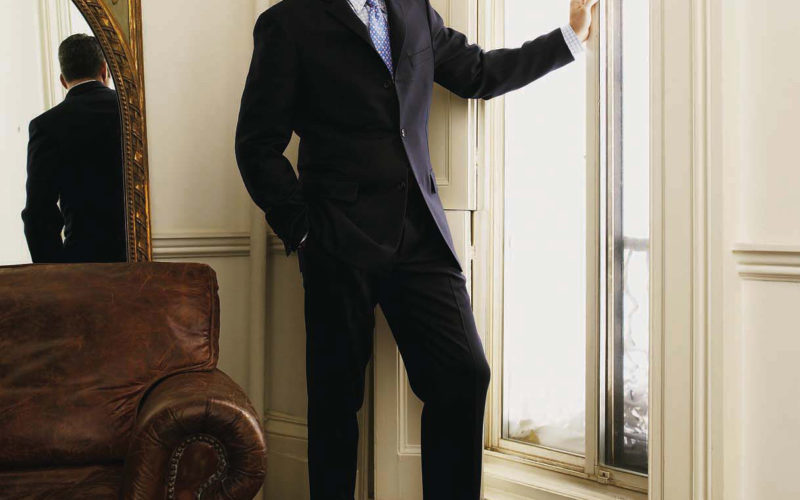Q. My husband has an executive interview coming up for the position of president in a new company. In the past he moved his way up in an informal setting, so he does not have a natural knowledge of traditional menswear. How does he need to dress to improve his chance of success?
Do subtleties help or seem overdone? I’m thinking of a handkerchief in his coat pocket, a tie pin, and cuff links. Also are there best tie colors, belt type, shoes for an interview?
A. Yes, there are specific clothes that will, if not guarantee a warm reception, at least help a man’s chances and not be a turnoff.
Dress conservatively, in keeping with the tone of the industry and the specific company. So, if the field is banking, investments, or insurance, interpret conservatively as quite conservatively. In a less money-related industry/field, straying a bit may be all right, but don’t veer too far.
It is always wise to dress for any interview the way the person one step above you dresses. In this case, that person is probably Chairman of the Board. Interestingly, my experience has shown that people are most comfortable hiring (and working with) others who seem a lot like themselves.
Specifically, “conservative interview dress” means a solid charcoal gray or dark blue suit, single-breasted with two buttons, either single or double back vents, ideally with cuffs on the trousers.
A white or light blue shirt is perfect; either a button-down collar or a straight point collar is acceptable, whichever he is most comfortable with. Keep in mind that, although a button-down shirt collar is not as dressy or formal as a point collar, it often carries with it a preppy/Ivy League vibe, and, thus, in some industries, could be a turn-off.
The tie is crucial. Choose a fine silk in a small dot, a handsome stripe, or a small all-over “neat” pattern. A light- or medium-blue, a not-too-bright red, or light yellow goes with either suit. If the shirt has a button-down collar, tie a four-in-hand knot; with a point collar, a half-Windsor works well. Be sure to include “the dimple.”
Yes, a pocket square is in style, but it is not a necessity. A white linen handkerchief, squarely-folded, is popular these days and safe, but I find the look a bit stiff. On the other hand, a colorful, softly-folded silk is a good bet, as long as the color and pattern are not too flamboyant. Be sure never to exactly match the tie and pocket square; you don’t want it to look like a set.
Men’s jewelry can be a tricky stumbling block. Tie bars/clasps are once again back in fashion as an option. Choose something quiet in either gold or silver toned, to match the watch. Cuff links may lead to errors in judgement – they can easily be too big or too gaudy.
Still, if a man enjoys making a dressy statement, then a French cuff shirt and tasteful cuff links could be a subtle way to do so. Keep in mind that barrel (button) cuff shirts are never wrong.
The well-dressed man’s belt and shoes are always simple and both in the same color – either black or dark brown. Quiet buckles on belts; no buckles on shoes. Polished lace-up shoes are among those “never wrong” items. Slip-on loafers are too casual for an interview, and wingtips might be a step too formal. A perfect choice would be a quality pair of laced cap-toe shoes, nicely polished.
Avoid any offbeat touches such as a bowtie, braces, two-toned shoes, or whimsical socks. Oddly enough, the more important the position, the more restrained and refined should be a man’s attire. Nothing should detract from his wonderful words of wisdom.
Please send your men’s dress and grooming questions to MALE CALL: Lois.Fenton@prodigy.net









